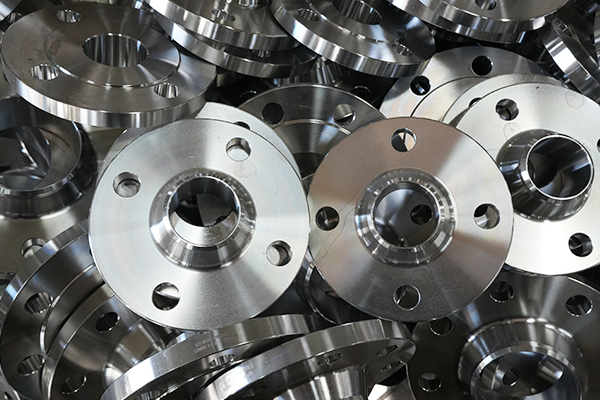NewsDetails
Seamless Steel Tubes for Shipbuilding: Key Corrosion Resistance and Welding Requirements
author:Zhantong time:2025-07-20 08:22:48 Click:168
In modern shipbuilding, Seamless Steel Tubes play a vital role in ensuring the structural integrity and long-term durability of vessels exposed to challenging marine environments. Whether used in fuel systems, hydraulic lines, pressure pipes, or structural frameworks, these tubes must withstand high pressure, saltwater corrosion, and frequent thermal fluctuations.
For shipbuilding professionals and marine engineers, understanding the technical demands—especially regarding seawater corrosion resistance and precise welding techniques—is crucial to selecting and working with seamless steel tubes that meet global standards.


1. Why Choose Seamless Steel Tubes in Marine Applications?
Seamless steel tubes are manufactured without welds or joints, making them inherently stronger and more reliable under pressure compared to welded pipes. This characteristic is especially important in maritime environments where pipe failure can result in significant safety and financial risks.
Key Advantages in Shipbuilding:
Superior tensile strength for pressure-bearing systems
Better fatigue resistance in rough sea conditions
Lower risk of leaks due to absence of welded seams
High dimensional accuracy for compact installation in ship systems
2. Marine Corrosion Resistance: What to Look For
Ships operate in salt-rich environments that rapidly corrode ordinary steel. Seamless steel tubes used in marine structures must therefore offer excellent resistance to seawater-induced corrosion. The choice of materials and protective treatments plays a central role here.
Material Composition Tips:
Opt for tubes with low carbon content and alloying elements like Cr (chromium), Ni (nickel), Mo (molybdenum). These elements improve resistance to pitting, crevice, and galvanic corrosion.
ASTM A106 Grade B, DIN 17175, or EN 10216-2 grades with additional alloy content are frequently used in marine environments.
Surface Treatments:
Hot-dip galvanizing
Epoxy or polyurethane coatings
Cathodic protection systems for submerged components


3. Welding Seamless Tubes in Shipbuilding: Challenges and Requirements
Though seamless steel tubes do not have longitudinal welds, they often require precise welding during fabrication or installation. Improper welding can weaken the material’s corrosion resistance and mechanical properties.
Key Welding Considerations:
Use low-hydrogen electrodes or TIG welding (Tungsten Inert Gas) for clean, controlled welds.
Preheating is sometimes necessary to prevent hardening and cracking, depending on the tube’s alloy composition.
Post-weld heat treatment (PWHT) may be needed to relieve stress and restore ductility, especially for thicker wall tubes.
Welding Standards to Follow:
AWS D1.1 (Structural Welding Code – Steel)
ISO 14731 (Welding coordination — Tasks and responsibilities)
ABS DNV-GL shipbuilding classification guidelines
4. Dimensional and Mechanical Specifications
In shipbuilding, seamless steel tubes are used in:
Ballast systems
Fire-fighting pipelines
Oil and gas transfer lines
Cooling water systems
Structural support members in offshore vessels
Specifications typically required:
Outer diameter: 6mm – 406mm
Wall thickness: 1mm – 50mm
Lengths: Custom, often 6m or 12m
Tensile strength: ≥ 450 MPa
Yield strength: ≥ 245 MPa
Seamless tubes must also pass strict tests such as hydrostatic pressure testing, eddy current testing, and ultrasonic flaw detection.
5. Environmental Compliance Certifications
Marine-grade seamless steel tubes should comply with international standards, including:
DNV (Det Norske Veritas)
ABS (American Bureau of Shipping)
LR (Lloyd’s Register)
BV (Bureau Veritas)
Such certifications ensure that the tubes are suitable for use in offshore oil platforms, merchant vessels, and naval shipbuilding.
Conclusion: Seamless Steel Tubes Enable Safer, Longer-Lasting Marine Structures
For shipbuilders, engineers, and vessel maintenance managers, understanding the performance and specification requirements of Seamless Steel Tubes is essential. The unique combination of corrosion resistance, pressure endurance, and weldability makes these tubes a preferred material for marine infrastructure. Whether building new vessels or retrofitting older ships, selecting the right seamless tube based on seawater resistance and welding characteristics ensures greater longevity and safety at sea.
At our company, we offer a wide range of Seamless Steel Tubes tailored for marine and shipbuilding applications, ensuring each product meets international certification standards and the highest quality demands.
References
GB/T 7714:Li Z, Xiao K, Dong C, et al. Atmospheric corrosion behavior of low-alloy steels in a tropical marine environment[J]. Journal of Iron and Steel Research International, 2019, 26(12): 1315-1328.
MLA:Li, Zhao-liang, et al. ;Atmospheric corrosion behavior of low-alloy steels in a tropical marine environment.; Journal of Iron and Steel Research International 26.12 (2019): 1315-1328.
APA:Li, Z. L., Xiao, K., Dong, C. F., Cheng, X. Q., Xue, W.,Yu, W. (2019). Atmospheric corrosion behavior of low-alloy steels in a tropical marine environment. Journal of Iron and Steel Research International, 26(12), 1315-1328.
GB/T 7714:Mandal N R. Ship construction and welding[M]. Singapore: Springer Singapore, 2017.
MLA:Mandal, Nisith R.Ship construction and welding. Singapore: Springer Singapore, 2017.
APA:Mandal, N. R. (2017).Ship construction and welding(pp. 413-417). Singapore: Springer Singapore.
 Recommended Products
Recommended Products
 Contact us
Contact us
—— Contact:Manager
—— Tel:+86 15231788966
—— Email:info@zhantongpipe.com
—— Url:https://www.zhantongpipe.com
—— Address:Mengcun Hui Autonomous County, Cangzhou City, Hebei Province









